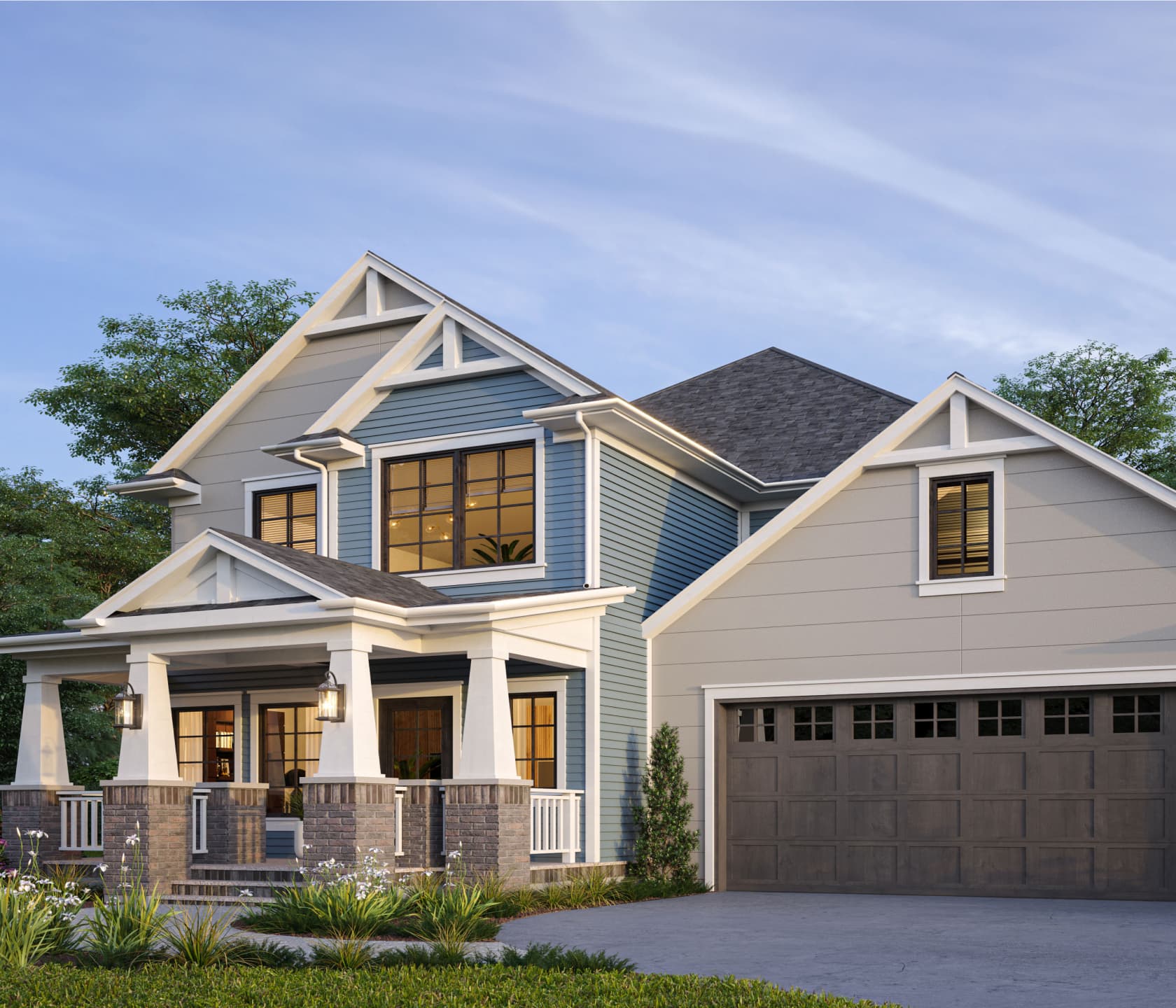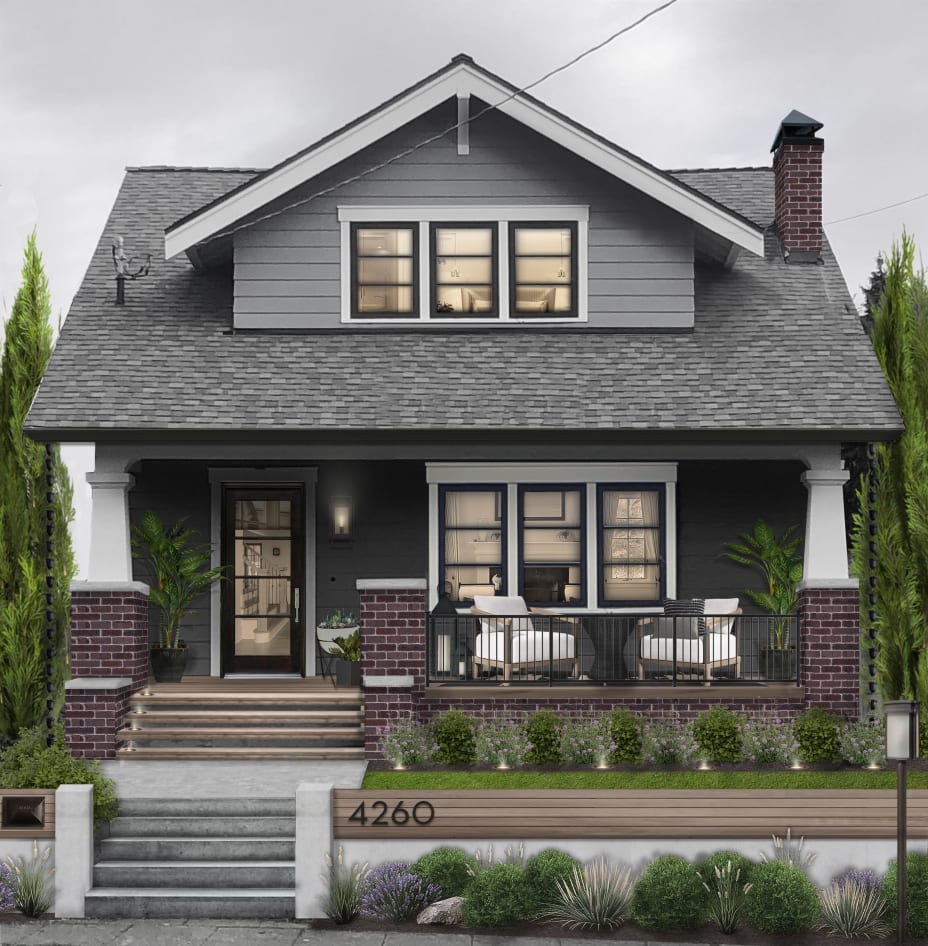The Duty of Arts & & Crafts Architects in Elevating Architectural Services in Residential Design
Arts and Crafts architects considerably affect residential style with their dedication to workmanship and sustainability. They focus on handcrafted details and natural materials, which enhance both aesthetic appeals and neighborhood identification. By entailing customers in the layout procedure, these architects develop unique home that resonate with personal tastes. This technique questions concerning the future trajectory of property architecture and its possible influence on area dynamics. craftsman style house. What lies ahead for this ageless style approach?

The Principles of Arts and Crafts Architecture
The essence of Arts and Crafts architecture depends on its dedication to workmanship and simplicity. This architectural activity arised in the late 19th century as a reaction to automation, stressing the value of handcrafted details and all-natural products. The concepts of Arts and Crafts architecture focus on functionality and harmony with the atmosphere. Frameworks commonly feature low-pitched roofing systems, large eaves, and subjected rafters, advertising a feeling of unity with nature.
Artisans played a substantial duty in this style, frequently incorporating ornamental components like tarnished glass, tiles, and woodwork, which reflect neighborhood workmanship. The shade scheme often tends to be natural and restrained, permitting structures to mix effortlessly right into their surroundings. Furthermore, the design encourages open layout and public rooms, promoting a sense of togetherness. In general, the principles of Arts and Crafts architecture commemorate the elegance of simpleness and the value of human connection to both nature and community.

Sustainable Practices in Residential Design
While the demand for ecologically liable living remains to grow, sustainable methods in household layout have acquired considerable grip amongst architects and home owners alike. Architects are increasingly incorporating energy-efficient innovations and sustainable materials into their styles, aiming to decrease carbon footprints and improve power preservation. Approaches such as easy solar layout, environment-friendly roofs, and rainwater harvesting systems are becoming standard components of modern residential architecture.
Additionally, the selection of locally sourced products lessens transportation discharges and sustains regional economic climates. Emphasis on all-natural light and ventilation not just enhances interior air top quality but additionally minimizes reliance on fabricated illumination and climate control systems. These lasting practices show a commitment to maintaining the environment while giving house owners with comfy, effective home. As understanding of environmental problems expands, the combination of sustainability in household style is positioned to end up being a specifying quality of modern architecture, guided by the principles developed by Arts and Crafts architects.
Customization and Customization in Home Layout
Personalization and customization in home design have actually arised as essential fads in response to the growing need for unique living atmospheres that mirror specific tastes and way of lives. Home owners progressively look for to tailor spaces that reverberate with their individual identifications, resulting in Click Here an extra meaningful connection with their living areas. craftsman style house. This activity urges architects to engage clients in the style procedure, fostering collaboration that ensures the last end result personifies the property owner's vision
Aspects such as bespoke formats, custom materials, and tailored surfaces enable for a varied array of expressions in residential design. Arts and Crafts architects play a critical function in this development, stressing workmanship and quality. Their concentrate on integrating creative aspects with performance assurances that each home is not just cosmetically pleasing yet additionally distinctly matched to the citizens' demands. This emphasis on personalization boosts the overall property experience, developing spaces that are both personal and long-lasting.
The Impact of Arts and Crafts Architects on Community Appearances
As communities advance, the impact of Arts and Crafts architects significantly forms their visual landscape. By stressing handcrafted details, natural materials, and standard building and construction strategies, these architects create homes that reverberate with their environments. Their designs often include local flora, structures, and shades, fostering a feeling of consistency in between constructed environments and nature.
Furthermore, the Arts and Crafts movement promotes neighborhood identification via building connection. By motivating house owners to take on similar style principles, areas establish a natural character that boosts aesthetic charm. This building uniformity not only enhances the aesthetic experience but additionally instills a feeling of satisfaction amongst residents.
The focus on sustainability and workmanship in Arts and Crafts architecture straightens with contemporary values, making these designs pertinent in modern settings. Inevitably, Arts and Crafts architects contribute substantially to the total charm and social stability of communities, leaving a long-term effect on their aesthetic tradition.

Future Fads in Arts and Crafts Architecture
With an enhancing focus on sustainability and personalization, future patterns in Arts and Crafts architecture are positioned to blend standard workmanship with modern technology - craftsman style house. Architects are likely to prioritize eco-friendly materials, using redeemed wood and natural rock to boost the sustainability of domestic styles. The assimilation of smart home innovation will certainly come to be commonplace, enabling for customized living experiences without endangering aesthetic integrity
Additionally, the rebirth of artisanal techniques will promote a restored admiration for handmade components, such as bespoke cabinetry and customized ceramic tile job. Future styles may likewise show an emphasis on community-oriented areas, motivating communication and link among citizens. Exterior living locations will certainly get importance, effortlessly incorporating nature into the home atmosphere. As Arts and Crafts architecture develops, it will remain to honor its roots while adapting to modern demands, developing unified areas that reflect individual values and lifestyles.
Regularly Asked Inquiries
What Motivated the Arts and Crafts Activity in Architecture?
The Arts and official website Crafts activity in architecture was influenced by a response against industrialization, stressing handmade high quality, all-natural directory materials, and a return to typical workmanship, intending to create unified, useful areas that celebrated virtuosity and uniqueness.
Exactly how Do Arts and Crafts Architects Collaborate With Clients?
Arts and crafts architects collaborate with customers with open dialogue, prioritizing individual needs and looks. They highlight craftsmanship and sustainability, cultivating a collaboration that integrates the client's vision with the engineer's experience in style and materials.
What Materials Are Frequently Utilized in Arts and Crafts Residences?
Typical materials in Arts and Crafts homes consist of natural timber, stone, and block, highlighting craftsmanship and natural looks. These elements develop a warm, inviting environment, reflecting the motion's dedication to high quality and simplicity in style.
How Do Arts and Crafts Layouts Enhance Indoor Living Areas?
Arts and Crafts layouts boost interior home by advertising all-natural light, open layout, and handcrafted details. These components promote a warm, inviting environment, encouraging a link in between citizens and their environments with thoughtful, useful aesthetic appeals.
What Are Some Famous Instances of Arts and Crafts Architecture?
Famous examples of Arts and Crafts architecture include the Wager Residence, Greene and Greene's masterpiece in California, and the Robie Home by Frank Lloyd Wright. These frameworks display handcrafted details and harmony with nature, defining the motion's significance.